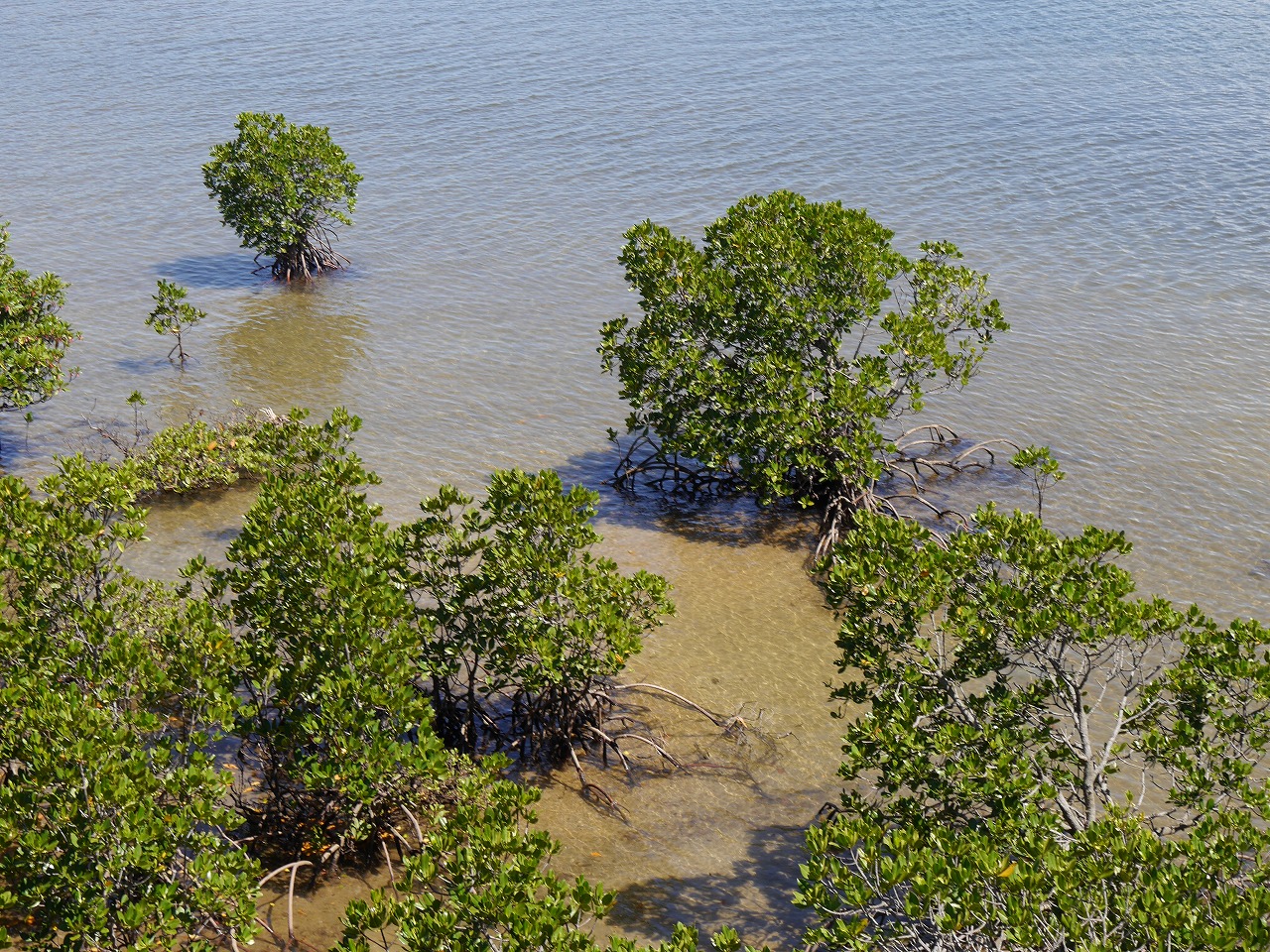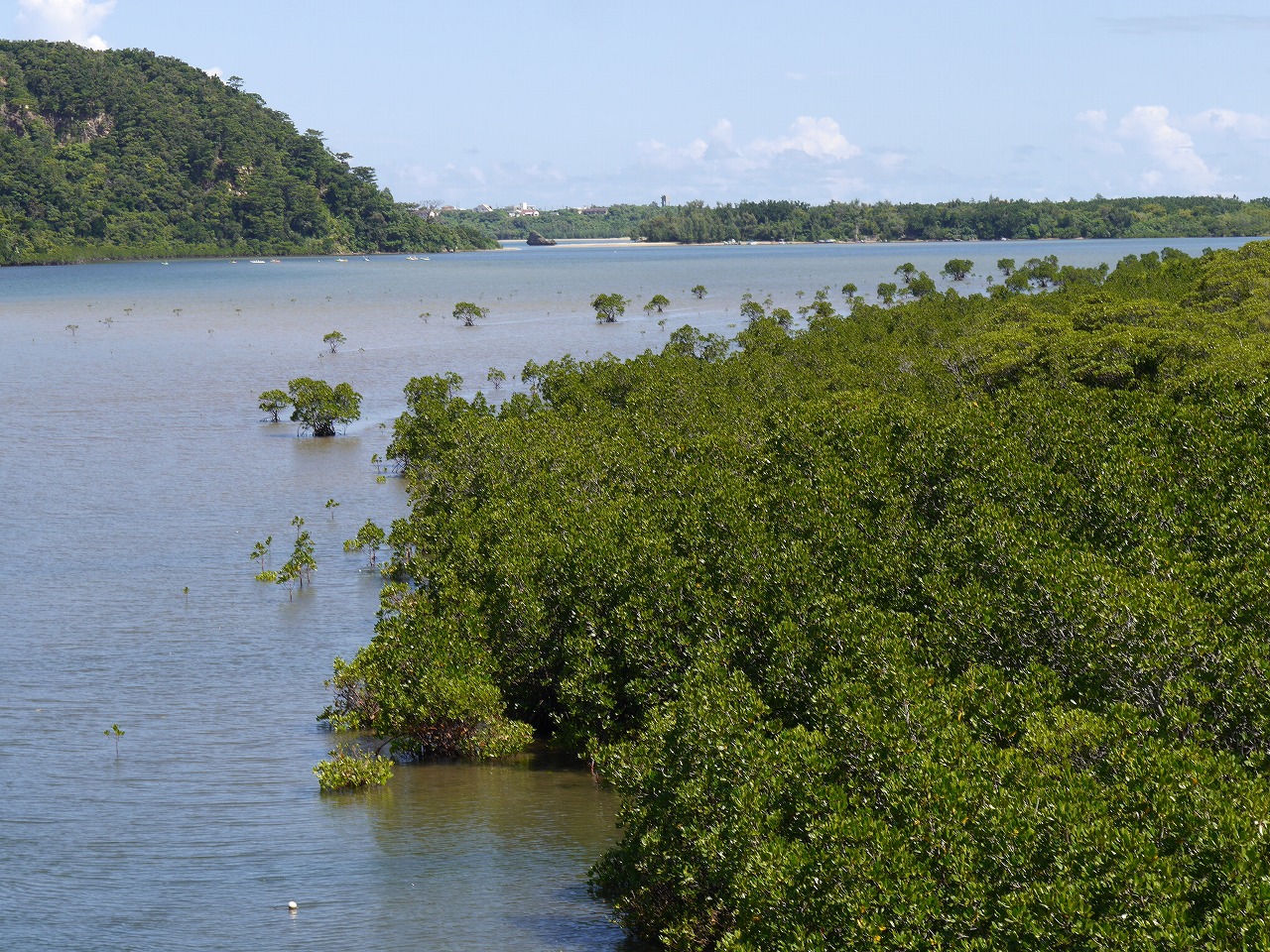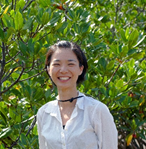Amazing Activities
This series introduces people (person or group) with outstanding achievements in mangrove-related fields.
Activities can be scientific findings, practical field procedures, photos, short stories, discovery of new or rare species/hybrids, etc.
Please recommend someone or yourself to the ISME Secretariat for selection by the Editorial Board.
Findings from long-term monitoring studies of Micronesian mangrove forests with special reference to carbon sequestration and sea-level rise
Outline: This paper was published in Ecological Research on 21 July 2022 (https://esj-journals.onlinelibrary.wiley.com/doi/10.1111/1440-1703.12346) as a Special Feature of the Journal on Blue carbon dynamics in coastal habitats: Their role in climate change mitigation and ecosystem function.
Through long-term research of mangrove forests on Pohnpei Island, the forest dynamics, carbon accumulation function, and impacts of sea-level rise were studied. The island experienced an average sea level rise of 3.9 mm/year from 1974 to 2020, exceeding the global average of 2.0 mm/year). Between 1993 (a year before the study begun) and 2010, it encountered rapid sea-level rise with an increased average annual rise of 8.3 mm/year. The Sonneratia alba community located at the seafront, has been strongly affected by rising sea level. The Bruguiera gymnorhiza community has also been affected as the surface soil was eroded. However, in both the Rhizophora stylosa and R. apiculata communities, no surface erosion was observed. Their stilt roots were able to deposit organic matters as mangrove peat, and consequently, an increase in the ground level was observed. The negative impact of sea level rise on mangrove forests has so far been considered hypotheses based on the relationship between the rate of soil sedimentation and the rate of sea-level rise in mangrove forests as a whole. If the rate of soil surface erosion due to sea-level rise is faster than the rate of soil accumulation in each community, there is concern that the existence of mangrove forests will be threatened. This paper is the world’s first report clarifying the relationship between sea-level rise and different mangrove communities. A notable finding is that the negative impact of sea-level rise on mangrove forests varies from community to community based on long-term field assessment.
Reference:Kiyoshi Fujimoto1, Kenji Ono2, Ryuichi Tabuchi2 & Saimon Lihpai3. Findings from long-term monitoring studies of Micronesian mangrove forests with special reference to carbon sequestration and sea-level rise. EcologicalResearch,1–14 (2022).
1Faculty of Policy Studies, Nanzan University, Nagoya, Japan. 2Forestry and Forest Products Research Institute, Tsukuba, Japan. 3Division of Forestry and Marine Enforcement, Department of Land, Pohnpei State Government, Kolonia, Micronesia.
URL: https://esj-journals.onlinelibrary.wiley.com/doi/10.1111/1440-1703.12346
Lead author: Prof. Kiyoshi Fujimoto, the lead author, is Professor of the Faculty of Policy Studies at Nanzan University, Nagoya, Japan. He and his team have studied the pristine mangrove forests on Pohnpei Island in the Federated States of Micronesia for over 25 years.

Diazotrophic communities of nitrogen fixation in rhizospheres of Rhizophora stylosa
Outline: The soils of tidal flats, on which mangroves grow, are often depleted in nitrogen because the nitrogen-containing litter is washed offshore during ebb tides. Under such site conditions, it remains unclear how mangrove plants acquire the nitrogen required to support their vigorous growth. The present paper (Inoue et al., 2020) discovered that the rhizospheres of mangrove trees dominated by Rhizophora stylosa accumulate diazotrophic communities having high soil nitrogenase activities. As trees grow and develop greater root biomass, the diazotrophic communities perform greater nitrogen fixation, which is pertinent for plant growth. The mutualistic relationship between mangrove roots and diazotrophs seems to benefit the mangroves by enabling them to establish and colonize open tidal flats. This study on R. stylosa was conducted in the northern part of Iriomote Island, one of the southernmost islands of Japan.


Reference: Tomomi Inoue1, Ayako Shimono2, Yasuaki Akaji1, Shigeyuki Baba3, Akio Takenaka1 & Hung Tuck Chan3. Mangrove–diazotroph relationships at the root, tree and forest scales: diazotrophic communities create high soil nitrogenase activities in Rhizophora stylosa rhizospheres. Annals of Botany 2020; 125(1): 131–144 (Editor’s Choice).
1National Institute for Environmental Studies (NIES), 16-2 Onogawa Tsukuba, Ibaraki 305-8506, Japan. 2Department of Biology, Faculty of Science, Toho University, 2-2-1 Miyama, Funabashi, Chiba 274-8510, Japan. 3International Society for Mangrove Ecosystems (ISME), University of the Ryukyus, Nishihara, Okinawa 903-0129, Japan.
URL: https://academic.oup.com/aob/article/125/1/131/5611213
Lead author: Dr Tomomi Inoue is a Senior Researcher of the Center for Environmental Biology and Ecosystem Studies, at the National Institute for Environmental Studies, Tsukuba, Japan. Dr Inoue has six publications in 2019 and has 188 citations in Google Scholar. She is also a Life Member of the International Society for Mangrove Ecosystems (ISME) with Headquarters in Okinawa, Japan, and the Project Leader of Tropical Coastal Ecosystems Portal (TroCEP URL: http://www.nies.go.jp/TroCEP/index.html), a website that provides information on tropical coastal ecosystems with world distribution maps, plant species lists and ecosystem functions.

